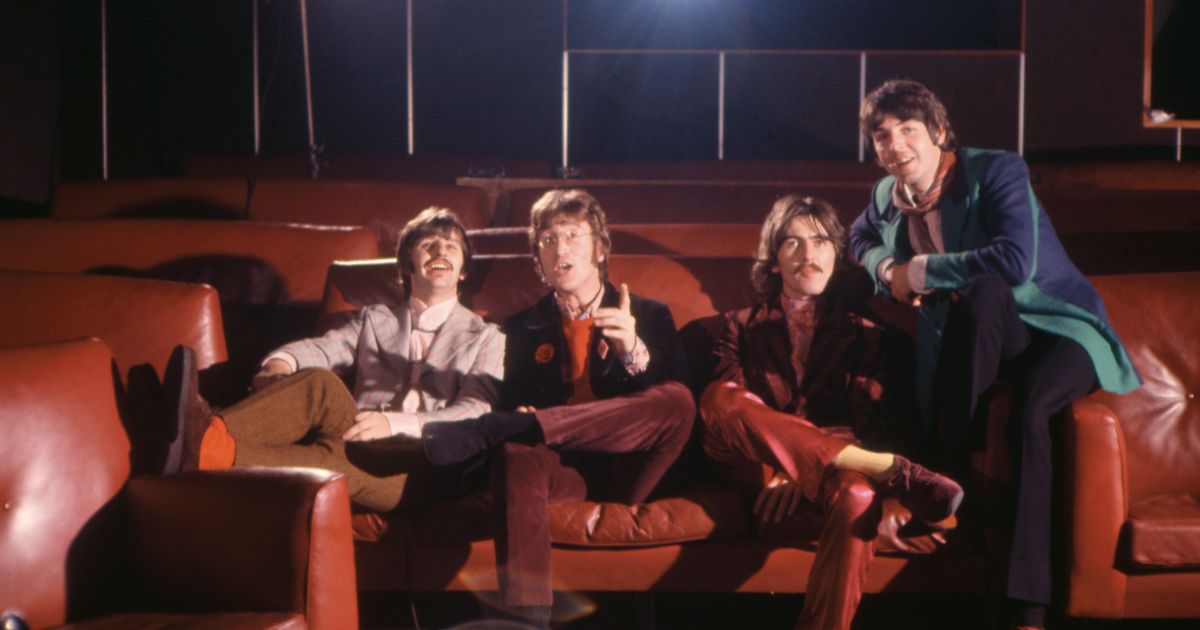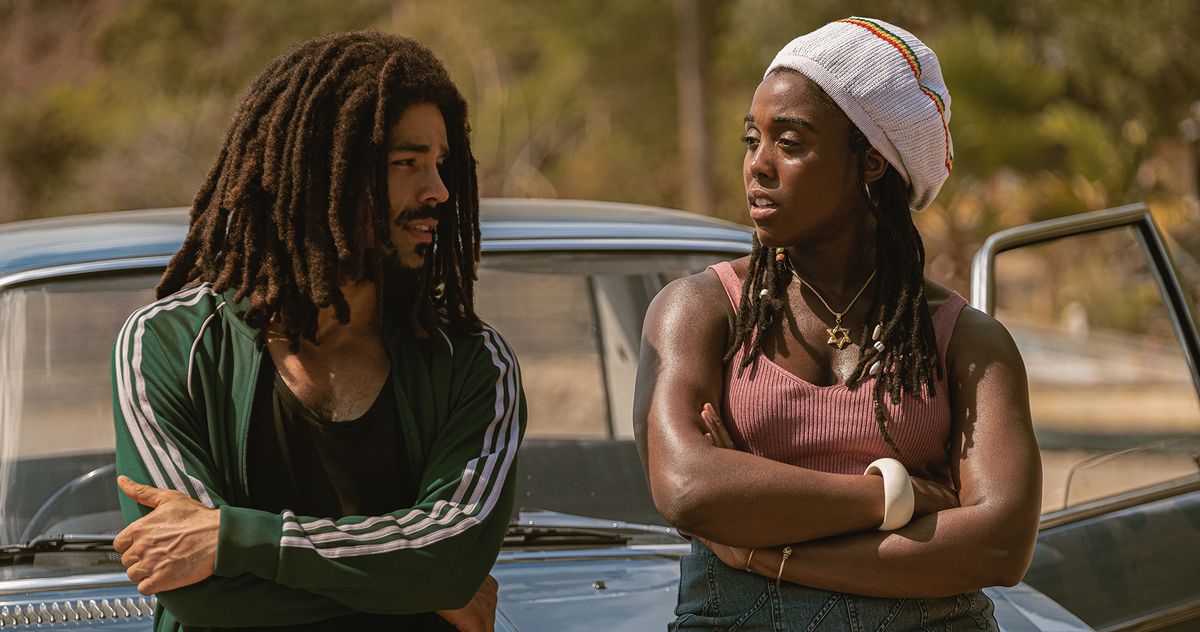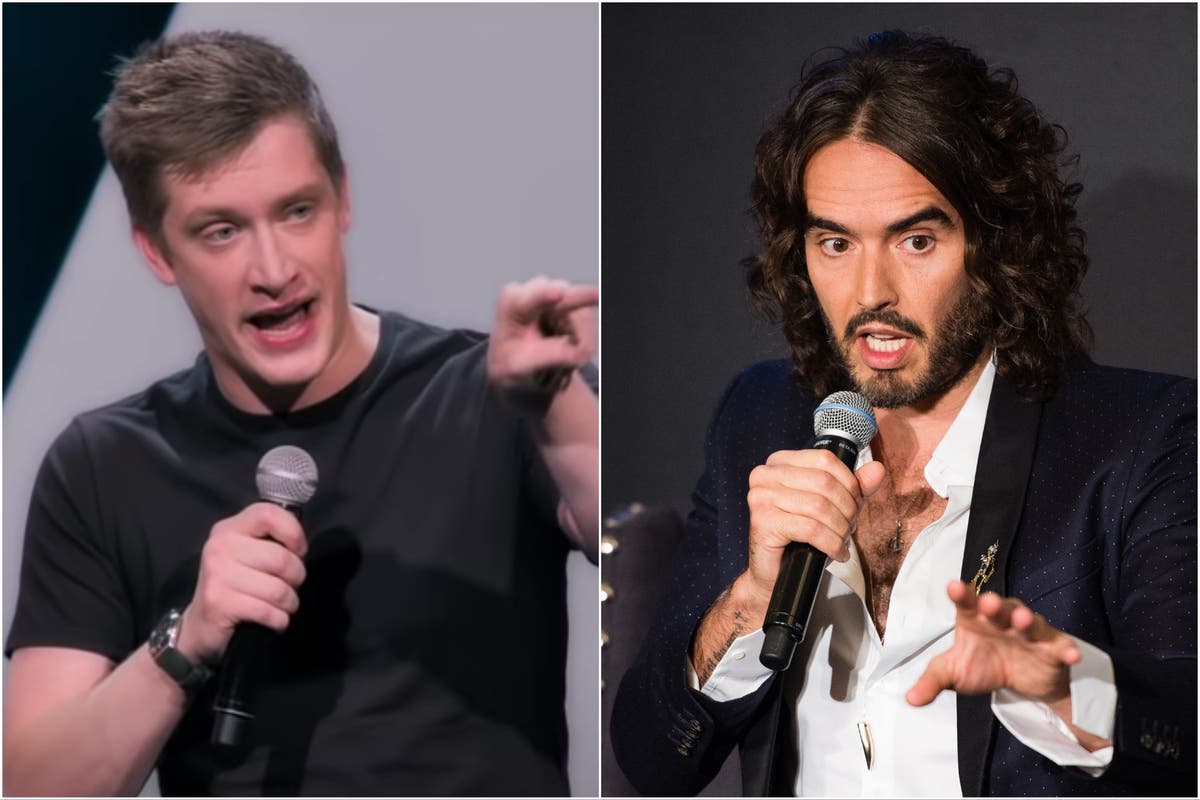
Let’s Cancel Spotify’s Instafests
This past week, Spotify launched their annual “Spotify Wrapped” campaign, a full-on PR blitz that allowed fans to share their top streamed artists, songs, and genres with their friends and followers in sleek-looking infographic presentations across various social media platforms. It’s an annual tradition that allows users the chance to rejoice in the continued convenience of the platform, and distract them from the well-documented fact that it continues to erode the monetary value of music as an artform. Taking things further, this year Spotify introduced a new feature that is even more egregious, rolling out personalized “Instafests” that allow users to generate their own three-day festival lineup flyers based on streaming data collected through different increments of time.
You probably saw them on Twitter or Instagram, and got a kick out of seeing some hilarious daily pairings like The Beatles or Taylor Swift getting small print below some small, obscure Grindcore or lo-fi bedroom pop act. But much like the frenzied sharing and discussing of yearly favorites, what makes these generated festivals so infuriating is that this highly successful company that has notoriously stiffed artists out of money that rightfully belongs to them, is now callously dangling one of the last remaining “paydays” of the music industry in front of artists struggling to re-coup. Even understanding that these lineups could only take place in a wide open field created in the kind of deep sleep you get after eating a bodega sandwich minutes before bed, this new tradition stings more than the wrapped features because these festivals are as fictional as Spotify’s promise to pay artists fairly for the work they’ve created. What stings more, is that the company is more than capable of paying artists higher rates for plays as well as booking their own IRL festivals to give some of their gargantuan annual profits back to the artists that deserve them.
Spotify is currently valued at $15.26 BILLION dollars. They were able to reach this wild level of success by not only offering an affordable way to stream an unfathomable amount of songs at your fingertips, but by doing it with an easy to use and easily navigable interface. Looking at their closest competitors—Apple a close second with Tidal and Amazon behind—each of those services offer a relatively similar price point to basic plans at around $9.99 per month. What allowed Spotify to generate such a high value is that they have set their payouts to artists as the laughably low-ball minimum rate of $0.0033 per play. Other options pay much better rates (relatively), with Tidal paying $0.013 per play and giving customers the option to pay more per month to give more money to their most streamed artists. Looking at their estimated totals, Spotify has a reported 456 million active monthly listeners in 2022, 188 million of which are premium subscribers that pay for the ad-free version of the platform. According to data from Macrotrends, Spotify’s actual revenue for 2022 (ending in September 30, 2022) was $12.184 billion. The site also points out that the company has seen a 11.57% increase in revenue year-over-year, meaning all of the bad press about the company has yet to do anything more than fog up the mirror.
Even after numerous calls to raise the payout to a penny per-stream or calls to leave the platform due to its continued support of boneheaded podcasters spreading misinformation, Spotify still remains the go-to and industry leader. And primarily, the way that Spotify continues to wrangle in and keep subscribers is through name recognition. In terms of audio streaming subscription platforms, they were the first in the door and remain the oldest game in town. This fact gives founder Daniel Ek the unique distinction as the Thomas Edison of devaluing music created by humans, as they were able to set streaming rates early without competitors raising questions for reform. In fact, when complaints were raised, Ek famously said that if artists are unhappy with these rates, they should simply make more music going forward. You know, something that all artists can snap their fingers and will into existence.
To put in perspective how lousy the payouts from Spotify truly are, take a world-famous, and appropriate, song-title “Got Your Money” by the late-great Ol’ Dirty Bastard (featuring Kelis). To date, that song has been played 128,870,885 times on Spotify. Pretty great numbers for a legendary song from a legendary artist, right? But given the rate that Spotify pays per-play—and with no knowledge of some deal brokered between the company and ODB’s estate—that means the song has earned a total of $425,273.92 in the entire time it’s been on the platform. That seems like a lot of money up front, but knowing that the amount has been gradually paid out since Spotify first made the song available to the public in 2011, it all seems a little questionable for such an enduring bop. Now think about how much a smaller artist who averages around 10,000 plays-per-year total would make.
Although booking a unique festival for each inpidual subscriber would obviously be impossible, as we’ve discussed, Spotify has more than enough money in the bank to at least book a number of festivals all over the world each year, paying artists they book in the process. For comparison’s sake, Pitchfork, which is owned by Conde Nast, has pretty much pivoted into booking festivals globally as one of their main moneymaking hustles. Although Pitchfork is hardly the only iron in the fire for Conde Nast, the company had a reported revenue of more than $2 billion this year. The publication most likely gets sponsors to help put the whole thing together, but it’s hard to believe that Ek couldn’t make the case for such a sure-fire way to generate more revenue through ticket sales funded through the piles of cash they have lying around as capital. While the world’s largest acts have been known to rake in millions for appearances at festivals like Bonaroo or Coachella, it has been reported that medium sized acts can sometimes see paychecks of around $10-20k per appearance. This kind of money can be a game-changer when considering the little-to-no money smaller bands receive in streaming payouts, or the minimal support rates they get paid on the road, or the merch cuts taken by greedy venues. But I digress. Touring is another story completely.
But who am I kidding? Rather than my dream that Spoitify would give back to the ecosystem it has aggressively fracked dry, if the platform were to do any sort of festival like this it would likely only cheapen the festival experience somehow. In many ways, Spotify is angling itself to be on the shortlist of real-life companies taking cues from Skynet from the Terminator films, as it is investing heavily in AI-generated music. If Spotify were to ever get into booking festivals, why would they ever focus on paying respects to actual regional scenes when they could offer their subscribers the chance to see an AI performance by Selena or a pixelated, reunited version of The Smiths while sitting at home? It’s cheaper for them to use the tools already at their disposal—your data—in order to keep you plugged in and out of touch with the humanity it takes to make a moving song.
To use one of my least favorite phrases of all time, if you enjoyed sending your own personalized festival flyer out, I’m really not trying to “yuck your yum” [shudders]. Discussion around these flyers were fun conversation-starters in most cases. Hell, my sister recently posted hers to Instagram and it included my band Labrador nestled in between Björk, a Rilo Kiley reunion, and the reanimated corpse of Roy Orbison. I’m sure like so many other bands out there who felt the same about being included on these flyers or year-end wrapped lists, I can’t deny I felt an overwhelming sense of joy that I had made something “real” and worthy enough of people’s time. But as the reality set in about the exploitive nature of this free promotion for a company that has turned music into a competition centered on the rules of “visibility is viability,” my joy began to mimic Homer Simpson gleefully eating his own donut head at the end of a famous Treehouse Of Horror episode. I was ignoring the larger problem as I was actively perpetuating it. While we are all doing free promotion for Spotify, we should all remember that we are also doing their recruiting work for them in the new year. Every time someone online says, “aw man, I wish I could post my own Instafestival,” that’s a possible new subscriber for Daniel Ek and Spotify, and another reason they will think there is nothing broken to fix.
Pat King is a Philadelphia-based journalist and host of the In Conversation podcast at Ears to Feed. He releases his own music with his project Labrador and is a tireless show-goer and rock doc fanatic. He recently took up long-distance running, which he will not shut up about. You can follow him at @MrPatKing.































































